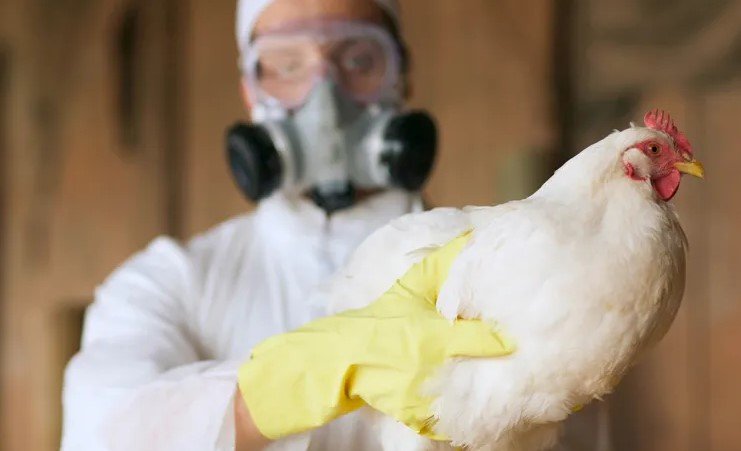Alarming cross-species infection raises public health fears as authorities race to contain the outbreak
A virus that was once just a poultry problem is now showing its teeth in the wild—and even in living rooms. India’s battle with H5N1 bird flu has taken a serious turn, with confirmed infections now seen in animals far beyond the coop. Tigers, leopards, jungle cats, and even pet cats are testing positive.
This isn’t just another seasonal scare. It’s a troubling new chapter.
Tigers and Tabby Cats: How the Virus Jumped the Fence
Until recently, bird flu meant dead chickens and culling farms. But not anymore.
As of April 4, officials confirmed the virus had spread to big cats like tigers and leopards in Maharashtra. And in Madhya Pradesh? A pet cat. Yes, a house cat, not a jungle predator.
Wild birds are also testing positive—vultures, crows, hawks, even the elegant demoiselle crane in Rajasthan.
No one’s sure how the virus got this far. But one thing’s clear: it’s moving faster and wider than before.

High-Level Meeting in Delhi Sounds the Alarm
The Department of Animal Husbandry & Dairying didn’t waste time.
On April 4, top brass gathered in New Delhi. The meeting was chaired by DAHD Secretary Alka Upadhyaya and included virologists, poultry industry leaders, and government advisors.
Their mission: figure out how bad this is and stop it from getting worse.
“We’re seeing species being infected that were never part of the conversation before,” said one government official who attended the meeting. “That’s a red flag for everybody.”
The urgency? Palpable. The cross-species leap has got experts wondering—what if it jumps to humans more easily next?
From Maharashtra to Goa: Infections Spread Across States
Here’s where things stand so far:
-
Maharashtra: Tigers, leopards, vultures, crows, egrets.
-
Madhya Pradesh: Pet cat tested positive.
-
Rajasthan: Demoiselle cranes, painted storks.
-
Bihar: Crows infected.
-
Goa: Jungle cats.
Andhra Pradesh, too, is on the radar—not for animal infections, but because a child died from H5N1 there earlier this year.
That tragic case put human health authorities on edge. Now, animal infections are turning concern into real fear.
How Serious Is This, Really?
Let’s not sugarcoat it. The virus is behaving unpredictably.
Cross-species transmission, or “spillover,” isn’t new. But this scale? And this fast? That’s different.
One-sentence paragraph.
Infections in wild carnivores like tigers or leopards often suggest that the virus is mutating—or at least becoming more resilient in mammals. That’s exactly what health experts don’t want to hear.
A report from the World Organisation for Animal Health (WOAH) recently warned that mammalian infections could increase the risk of the virus adapting to human hosts. Translation? The threat isn’t just about birds anymore.
Wildlife Surveillance and a Data Glimpse
To visualize the scale of this unusual spread, take a look at what officials documented from January 1 to April 4, 2025:
| State | Non-Poultry Species Infected |
|---|---|
| Maharashtra | Tigers, Leopards, Vultures, Crows, Egrets |
| Madhya Pradesh | Pet Cat |
| Rajasthan | Demoiselle Cranes, Painted Storks |
| Bihar | Crows |
| Goa | Jungle Cats |
The diversity of hosts—big cats, birds of prey, and domestic pets—has experts scrambling to rethink containment strategies.
What’s the Plan from Here?
Containment isn’t as simple as closing chicken farms anymore.
Now, the government is moving toward more aggressive wildlife surveillance. State forest departments are being looped in. Zoo officials have been asked to test animals that show even mild symptoms. Pet owners, especially cat parents, are being advised to limit outdoor exposure.
Two short sentences.
There’s also talk of ramping up RT-PCR testing capacity specifically for animals, including wildlife. Some states are reportedly preparing dedicated H5N1 task forces.
Bullet point time—here’s what’s likely coming next:
-
Enhanced monitoring in wildlife sanctuaries and zoos
-
Door-to-door animal health checks in outbreak zones
-
Collaboration between forest, animal husbandry, and health departments
-
Possible movement restrictions on domestic pets in red zones
The goal? Stop the virus before it finds a better way to infect humans.
